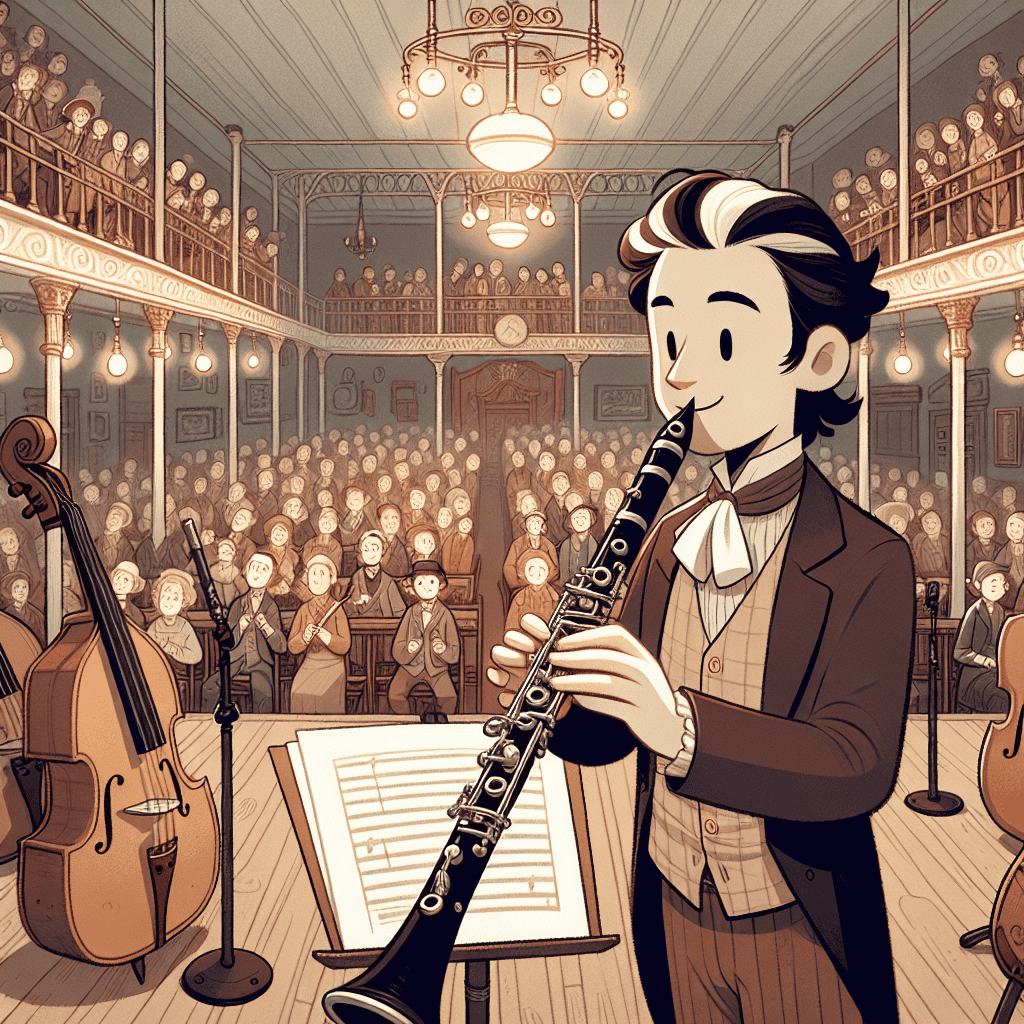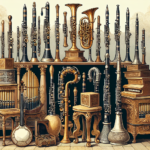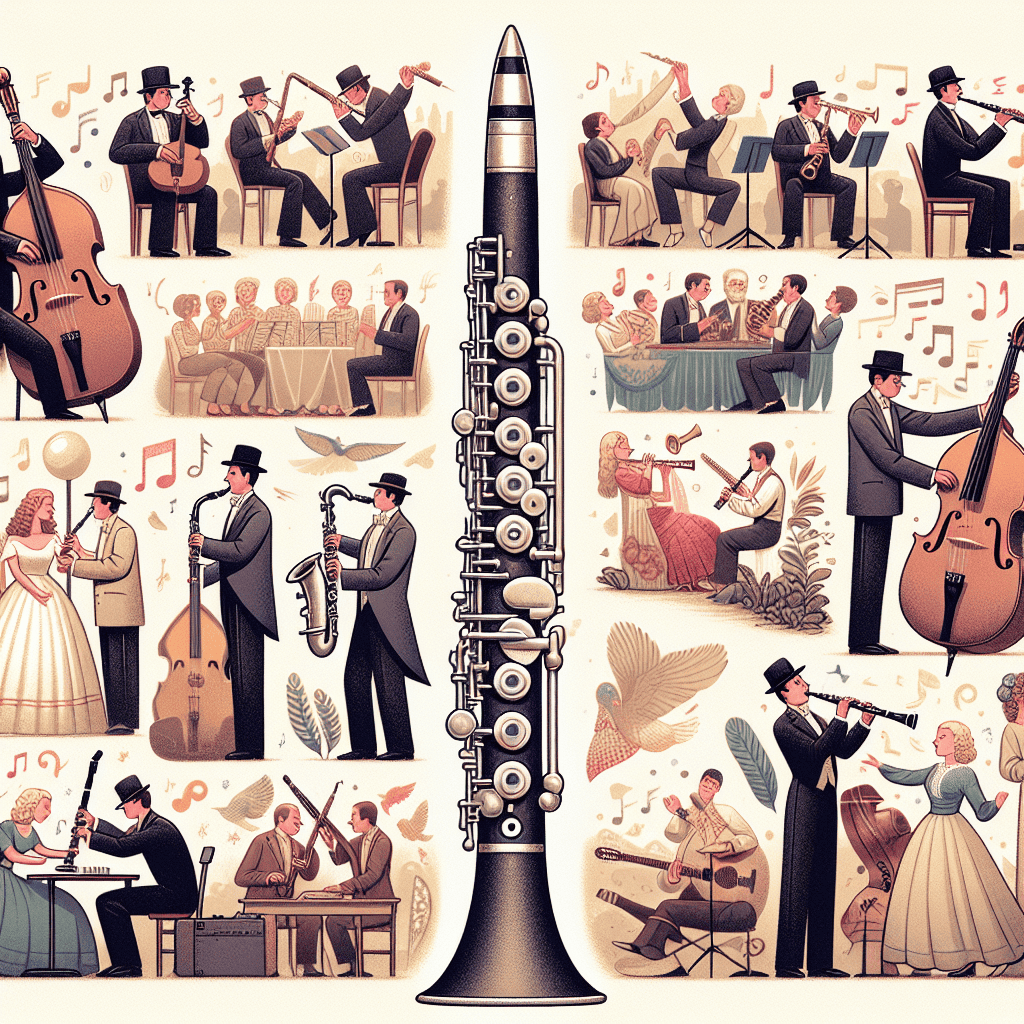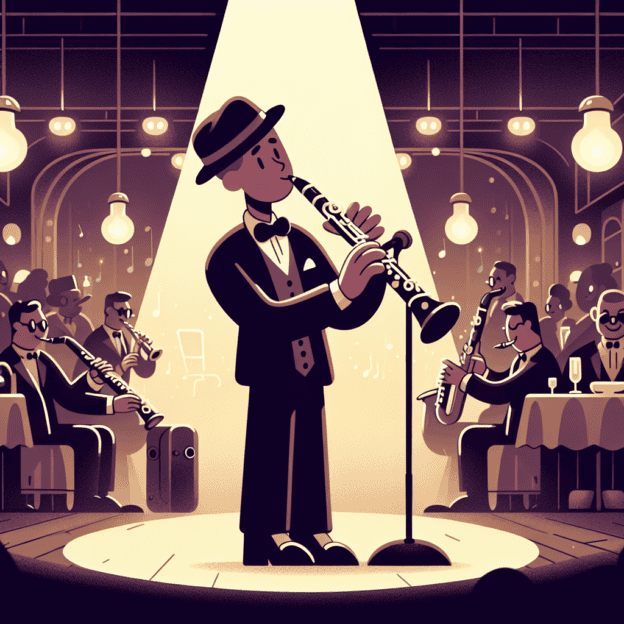The Clarinet's Enchanting Role in Jazz Literature
The clarinet in jazz-influenced literature has found a unique place in the world of music. Picture yourself in a dimly lit club, surrounded by soft laughter and the smooth notes of a clarinet filling the air. The clarinet's magic weaves into the very fabric of jazz literature, bringing to life stories, emotions, and the raw energy that jazz music inspires.
Jazz history is a blend of various influences and instruments, but the clarinet stands firm in this narrative. It has transformed songs into stories and given voice to complex emotions. Famous clarinetists like Benny Goodman and Artie Shaw paved the way, showcasing not just skill but also an emotional depth that echoes through their music. Their success stems from understanding the clarinet's unique role in jazz storytelling.
A Bridge Between Harmony and Emotion
The clarinet often connects the intricate jazz harmony with the raw emotional expression needed for literary characters. Writers frequently spotlight this instrument for its unique sound, which can shift effortlessly from gentle lullabies to thrilling crescendos. Consider how jazz greats are portrayed in literature—each note paints a feeling or a moment, inviting listeners into a world of fleeting echoes.
| Clarinet Feature | Impact on Jazz Literature |
|---|---|
| Unique Timbre | Enhances character expression and mood setting |
| Versatility | Allows for diverse storytelling across genres |
| Improvisational Ability | Mirrors the spontaneity in jazz-influenced writing |
Adding Layers to Jazz Compositions
As we explore further, we see how the clarinet adds depth to compositions in jazz-influenced literature. From the early New Orleans scene to modern interpretations, the instrument's flexibility has allowed it to blend with various styles. Sidney Bechet, for example, used the clarinet to push boundaries, creating room for improvisation that many writers have captured. Can you picture a smoky jazz bar where the clarinet's notes soar higher and higher, drawing everyone into its bluesy embrace?
Craftsmanship: More Than Just an Instrument
The importance of clarinet craftsmanship can't be ignored, especially when considering renowned brands like Martin Freres. These instruments aren't just tools; they're channels for communication. The sounds they produce express the inexpressible, echoing joy or sorrow that define moments in jazz-themed stories. Think about it—what sets a clarinet's voice apart from a saxophone's? It's in the design, the craftsmanship, and how air flows through the instrument.
Rich Imagery in Jazz Literature
Jazz literature often paints vivid pictures and sounds, pulling you in like a gentle breeze on a warm day. The words on the page reflect a jazz solo's spirit—spontaneous yet deeply rooted in tradition. The clarinet enhances this experience, providing subtle undertones that guide readers through a journey of emotion and rhythm.
Modern Takes on a Classic Sound
As you continue exploring, consider how today's artists weave the clarinet into contemporary stories. Musicians like Anat Cohen have taken traditional clarinet techniques and reimagined them in modern literature, blending old and new. Jazz storytelling becomes multi-layered when artists honor their roots while experimenting with their craft. Give it a try; play a passage and feel how the words might transform into rhythms and melodies.
Crossing Genre Boundaries
The clarinet's adaptability extends to various musical styles, fitting seamlessly even within the complex structures of jazz-influenced classical music. This flexibility allows writers to turn their thoughts into rhythmic tones that speak volumes. In literature, clarinets might act as a surprising element in an otherwise structured symphony, breaking through with a passionate solo that mirrors character conflicts.
Embracing the Spirit of Improvisation
Beyond adding depth to literary themes, the clarinet in jazz inspires writers to capture the essence of improvisation and emotional shifts. Whether expressing heartbreak or celebration, the clarinet tells stories that go beyond words on a page. Music and literature blend beautifully, each expressing nuances that words alone struggle to convey.
Dive into the World of Jazz Literature
If you're interested in exploring jazz-influenced literature, let the clarinet be your guide. Take time to discover how different clarinetists have shaped this genre. A world of stories awaits, each echoing with the sweet sounds of this remarkable instrument. See how the clarinet has become a shining star in jazz literature, connecting sounds and stories into one complete experience.
The Clarinet's Lasting Impact
In conclusion, the clarinet plays a special role in jazz-influenced literature. Its ability to tell stories through sound creates a rich interplay between literature and music, evoking feelings that traditional prose often can't capture. As you delve deeper, remember the legacy of brands like Martin Freres, whose quality instruments help maintain this beautiful relationship between clarinet and narrative. Each note breathes life into literature, creating an echo that invites everyone to listen closely and feel deeply.
Table of Contents
- The Clarinet's Enchanting Role in Jazz Literature
- A Bridge Between Harmony and Emotion
- Adding Layers to Jazz Compositions
- Craftsmanship: More Than Just an Instrument
- Rich Imagery in Jazz Literature
- Modern Takes on a Classic Sound
- Crossing Genre Boundaries
- Embracing the Spirit of Improvisation
- Dive into the World of Jazz Literature
- The Clarinet's Lasting Impact







